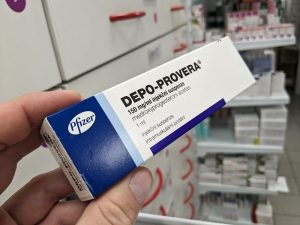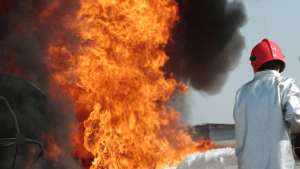This page examines sexual abuse lawsuits involving juvenile inmates at the Hulse Juvenile Detention Center in Vernon Hills, Illinois. Like other juvenile detention facilities across Illinois, the Hulse Juvenile Detention Center has faced serious allegations of sexual abuse, staff misconduct, and institutional neglect. Survivors have come forward with claims of abuse by staff members, inadequate supervision, and retaliation for reporting mistreatment. These patterns reflect broader systemic issues within Illinois’s juvenile detention system, where accountability has often been lacking.
If you believe you have a potential sexual abuse lawsuit involving the Hulse Juvenile Detention Center, contact our sexual abuse lawyers today at 800-553-8082 or get a free online consultation. We are committed to fighting for survivors and holding county officials accountable for the harm that was allowed to happen.
The Hulse Juvenile Detention Center
Located in Vernon Hills, Illinois, the Hulse Juvenile Detention Center is Lake County’s primary facility for holding youth who have been arrested or charged with delinquent acts. Officially known as the Robert W. Depke Juvenile Complex Center, the facility is operated by the 19th Judicial Circuit Court of Illinois and has historically served both pre-adjudicated and adjudicated youth. It is named after former Lake County Board Chairman Robert W. Depke.
The complex is not just a detention center. It also houses the FACE-IT Residential Treatment Program (Families Acting Collaboratively to Educate and Involve Teens), which is a court-mandated initiative aimed at rehabilitation rather than incarceration. FACE-IT is intended to provide counseling, therapy, and behavioral intervention services for male youth between the ages of 12 and 17. The program was designed to address underlying issues like substance abuse, family conflict, and mental health disorders that often contribute to juvenile delinquency. Youth in FACE-IT live in the facility for extended periods, with structured schedules that include schooling, therapy, and group sessions.
Publicly, the Hulse Center and its affiliated programs promote a mission of “accountability, support, and rehabilitation.” But reports from survivors and recent legal inquiries suggest a much darker reality inside the walls of the facility. Multiple allegations have surfaced indicating that youth were subjected to abuse, neglect, and mistreatment by staff members or by peers under staff supervision. Survivors have described a range of experiences, from verbal degradation and physical intimidation to outright sexual abuse.
Much of the scrutiny has centered on institutional failures that lead to sexual abuse, including a lack of oversight, insufficient staff training, and a culture of silence that allegedly allowed abusive behavior to continue unchecked. Some former residents allege that their complaints were ignored or retaliated against, creating an environment where reporting abuse felt unsafe or futile. This was not just a Hulse problem. It was, and still is, to a lesser degree, a national problem. These patterns are disturbingly similar to what has been documented in juvenile justice systems across the country.
This pain has been disproportionately felt by Illinois victims. Since May 2024, approximately 800 individuals have filed lawsuits alleging sexual abuse during their time in Illinois juvenile detention centers, with incidents spanning from 1996 to 2023. These allegations include severe misconduct, such as rape, forced sexual acts, and physical assaults committed by staff members across various roles, including corrections officers and kitchen staff. Just an epic tragedy that is only now getting the attention it deserves.
For many detained youth, safety was not a promise. It was a gamble.
Reports of Abuse and Neglect
The Hulse Juvenile Detention Center has been the subject of allegations involving sexual abuse, physical misconduct, and neglect. Survivors have reported being assaulted by staff and other detainees, often in areas with little supervision. Some incidents occurred in showers, cells, or during transport, where staff either failed to intervene or were directly involved.
Internal documents and audits have revealed gaps in supervision and inconsistencies in incident reporting, raising questions about staff awareness and response to abuse. These systemic issues suggest that the facility’s environment allowed abuse to occur and persist.
Patterns of Retaliation and Silence
Survivors have described a culture at Hulse where reporting abuse led to retaliation. Youth who spoke out faced isolation, loss of privileges, or further harassment by staff. This environment discouraged reporting and allowed abuse to continue unchecked.
Institutional protection often took precedence over child protection. Administrators failed to act on credible warnings, and staff turnover was high without corresponding accountability. These patterns reflect a system more focused on preserving its reputation than ensuring the safety of its residents.
A Missed Opportunity for Reform
Despite calls for reform, structural issues at Hulse remained largely unaddressed. Efforts to implement trauma-informed training, increase oversight, and establish clear reporting mechanisms were insufficient. Lawsuits allege that those responsible for responding to abuse reports participated in cover-ups or discouraged legal action.
The failure to enact meaningful change highlights a lack of leadership and moral responsibility. The system’s design lacked adequate checks and safeguards, leading to ongoing harm for detained youth.
Lawsuit Information Center
A facility cannot claim to protect children if it protects their abusers.
Hulse Sex Abuse Settlement Compensation Amounts
As of now, there have been no large-scale settlements tied specifically to Hulse-related sexual abuse claims. But comparable cases from other jurisdictions offer a useful benchmark for estimating potential compensation ranges and the legal frameworks shaping these outcomes. These examples help illustrate what survivors might expect if litigation tied to Hulse moves forward in a meaningful way.
For instance, in California, Los Angeles County agreed to pay over $4 billion to resolve more than 3,000 sexual abuse claims involving county-run juvenile halls and probation camps. This remains one of the largest government-funded sexual abuse settlements in U.S. history and underscores the scale of liability public institutions can face when systemic failures in oversight and protection are exposed. Similarly, in New Jersey, the state paid over $87 million to resolve lawsuits brought by survivors who alleged abuse in the custody of the Juvenile Justice Commission and other state-run youth facilities. Those cases also pointed to institutional cover-ups and long-standing patterns of neglect. These settlements send a clear message: institutions that fail to protect vulnerable youth can and will be held accountable.
How Is Settlement Compensation Calculated?
While every case is different, compensation in institutional sex abuse cases is generally based on several factors. These include the nature, severity, and duration of the abuse, the survivor’s age and vulnerability at the time, any efforts by the institution to conceal or ignore the abuse, and the ongoing impact on the survivor’s mental and physical health. In many of these MDLs and coordinated proceedings, additional weight is given to how many individuals were involved and whether systemic policies contributed to the harm.
If legal action related to Hulse follows a similar path, survivors may see similar forms of relief. Whether through a global settlement program or individual verdicts, these cases are about more than money. They are about giving survivors a voice and holding those in power accountable for years of inaction.
Settlement Compensation in Juvenile Detention Sexual Abuse Cases
Settlement amounts in juvenile detention sexual abuse lawsuits are often substantial, particularly in serious cases where compensation can reach into the millions. These high figures reflect the profound and lasting harm suffered by victims, the institutional failures that allowed the abuse to occur, and the significant resources required for survivors’ long-term recovery and support. In Illinois, many of these cases involve widespread negligence or misconduct within juvenile detention facilities. As a result, attorneys often pursue substantial settlements from the well-funded third parties responsible for the abuse.
Below is a summary of the handful of factors that tend to drive the settlement value of juvenile sex abuse lawsuits.
1. Severity and Duration of Abuse
The extent and length of the abuse are the most critical factors in determining compensation. Cases involving prolonged abuse or particularly violent acts typically command higher settlement amounts. Jurors and insurance carriers alike recognize the devastating emotional and physical toll such abuse inflicts on victims.
2. Impact on the Victim
The lasting effects of the abuse—especially on a victim’s mental health, daily functioning, and overall quality of life—are central to settlement negotiations. In Illinois, attorneys often use expert testimony from mental health professionals to illustrate the depth of trauma, which strengthens the case for higher compensation.
3. Institutional Negligence
The degree of institutional failure plays a major role in shaping the outcome of these lawsuits. Facilities with documented patterns of ignoring abuse reports or maintaining dangerous policies are more likely to face significant liability. When presented with evidence of systemic neglect or gross misconduct, juries are especially inclined to award large sums.
3. Identification of the Abuser
Being able to name the individual guard or staff member at the facility who committed the sexual abuse is NOT necessary. The victim’s testimony and a general description of the abuser is enough to bring a case. However, for cases where the victim is able to identify the abuser by name that information can sometimes increase the potential settlement value of the case.
Deadline For Juvenile Detention Sex Abuse Lawsuits in Illinois
Recent changes in Illinois law have strengthened the rights of childhood sexual abuse survivors, providing broader protections and more time to pursue justice. For incidents that occurred on or after August 20, 2019, there is no statute of limitations—survivors may file a civil lawsuit at any time.
For abuse that occurred prior to that date, survivors typically have until they turn 38 years old, or 20 years from the date they discovered that the abuse caused their injuries—whichever period provides more time. It’s important to note that the 20-year “discovery rule” can be more complex than it appears. Courts don’t rely solely on when a survivor personally believes they made the connection between the abuse and the resulting harm. Instead, judges consider when a reasonable person in similar circumstances would have recognized the link. This means the legal clock may begin ticking earlier than some survivors realize.
Know Your Rights and Legal Options
Under Illinois law, minors in detention cannot legally consent to sexual activity with adults in authority. Such behavior is presumed coercive and abusive. Survivors of sexual abuse at the Hulse Juvenile Detention Center have the right to pursue civil claims, even years after the abuse occurred, under Illinois statute 735 ILCS 5/13-202.2.
Damages may include compensation for emotional trauma, therapy costs, loss of educational opportunities, physical injury, and long-term psychological harm. Many lawsuits also seek systemic reform to prevent future abuse and ensure safer conditions for detainees.
Contact Our Attorneys
If you or a loved one suffered abuse at the Hulse Juvenile Detention Center, we want to hear your story. Our lawyers offer free, confidential consultations and fight tirelessly for survivors of institutional abuse. You pay nothing unless we win your case.
Call us at 800-553-8082 or contact us online to learn more about your legal rights.










